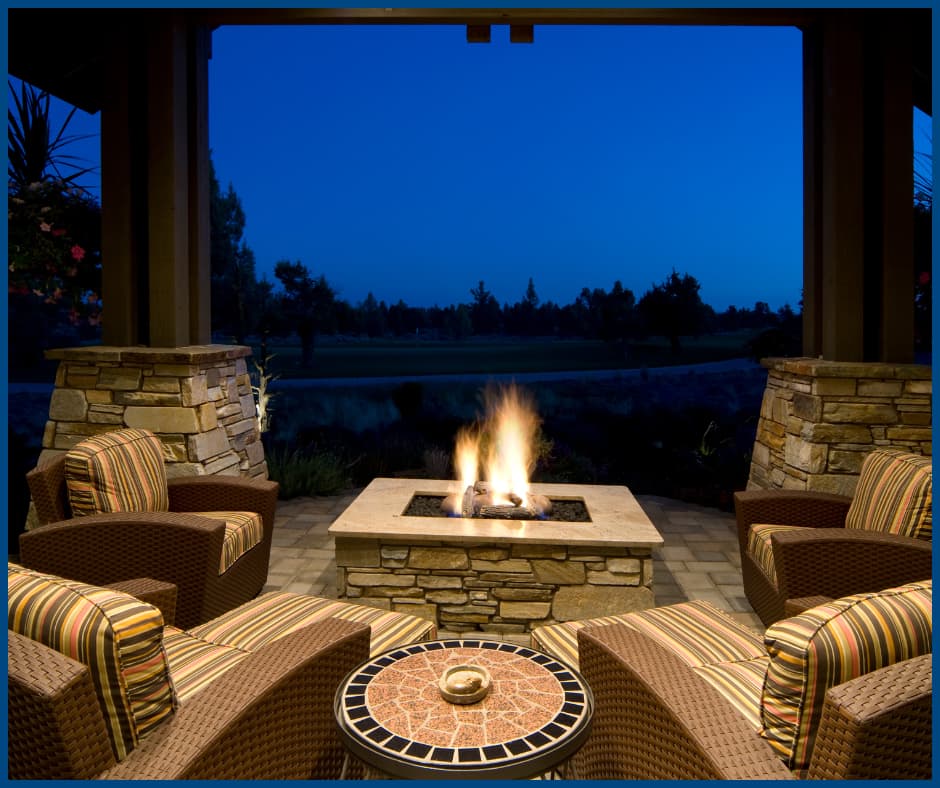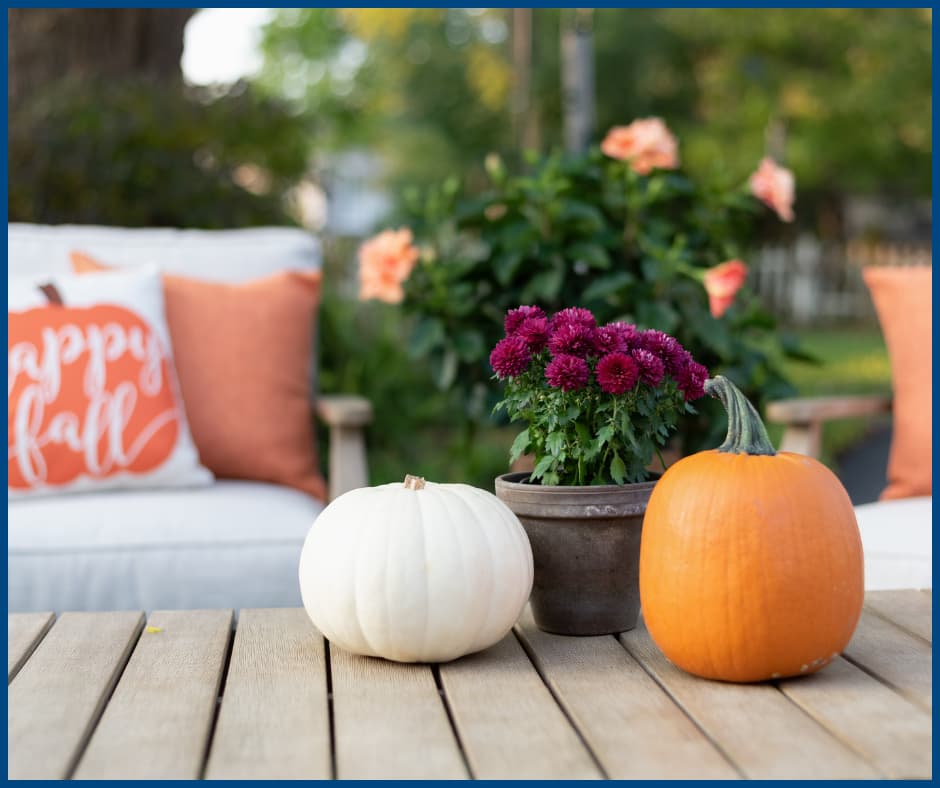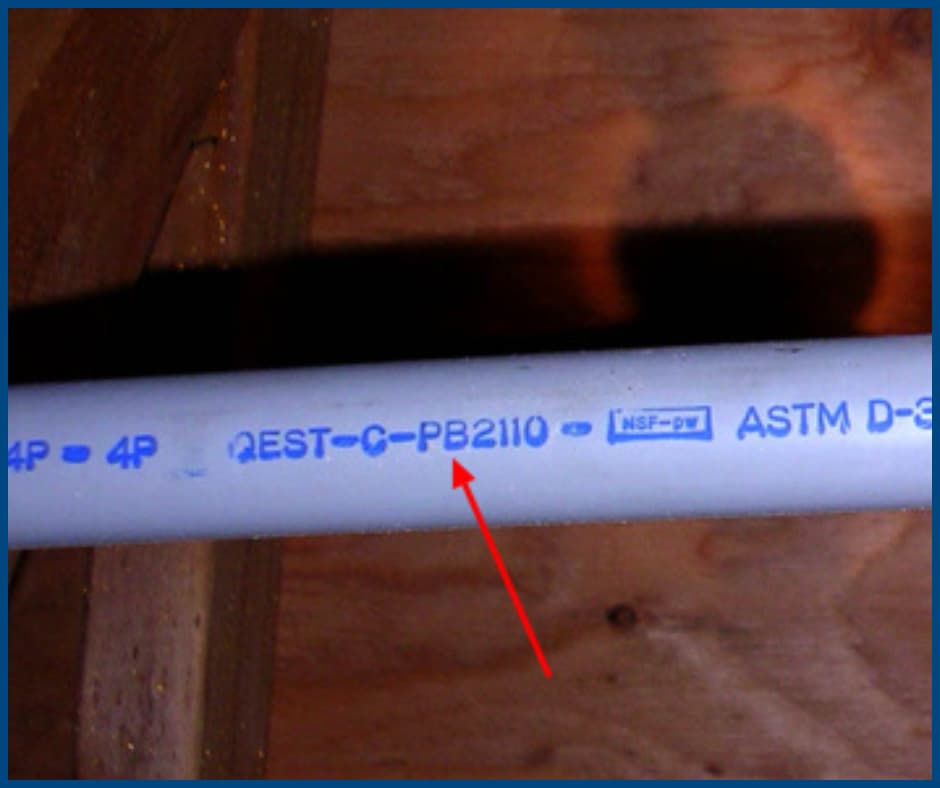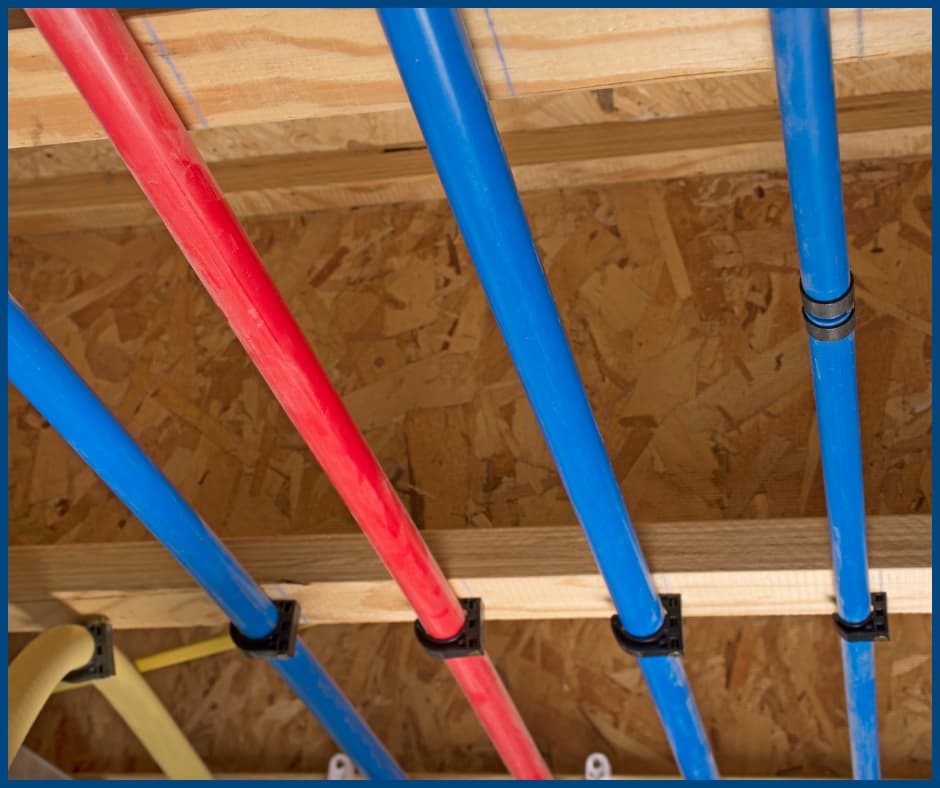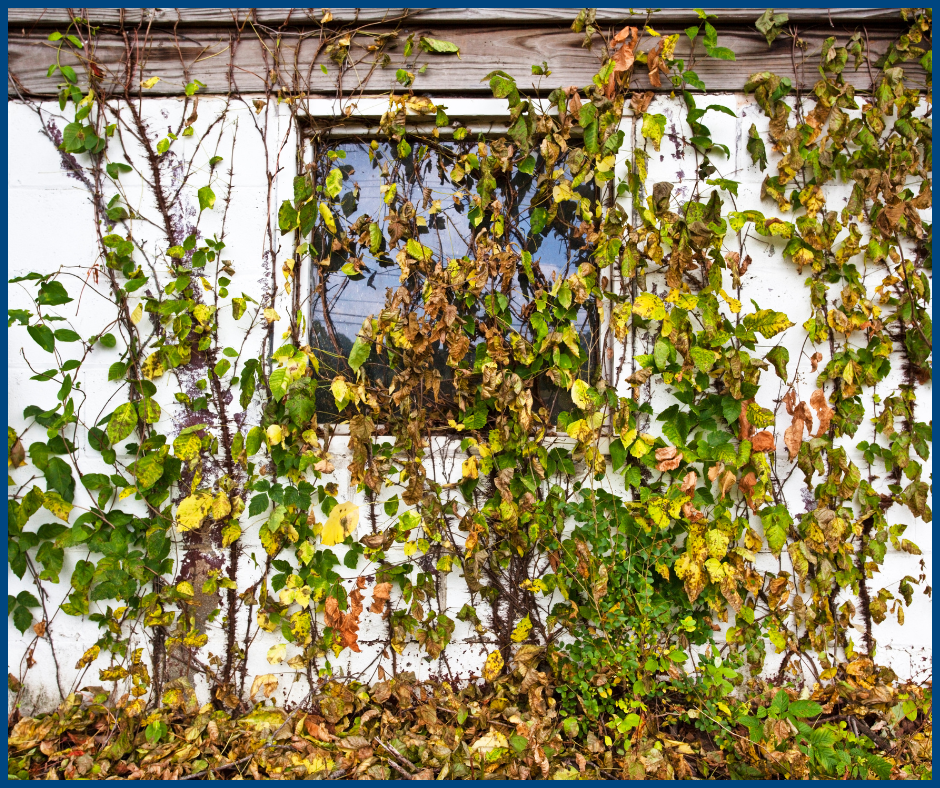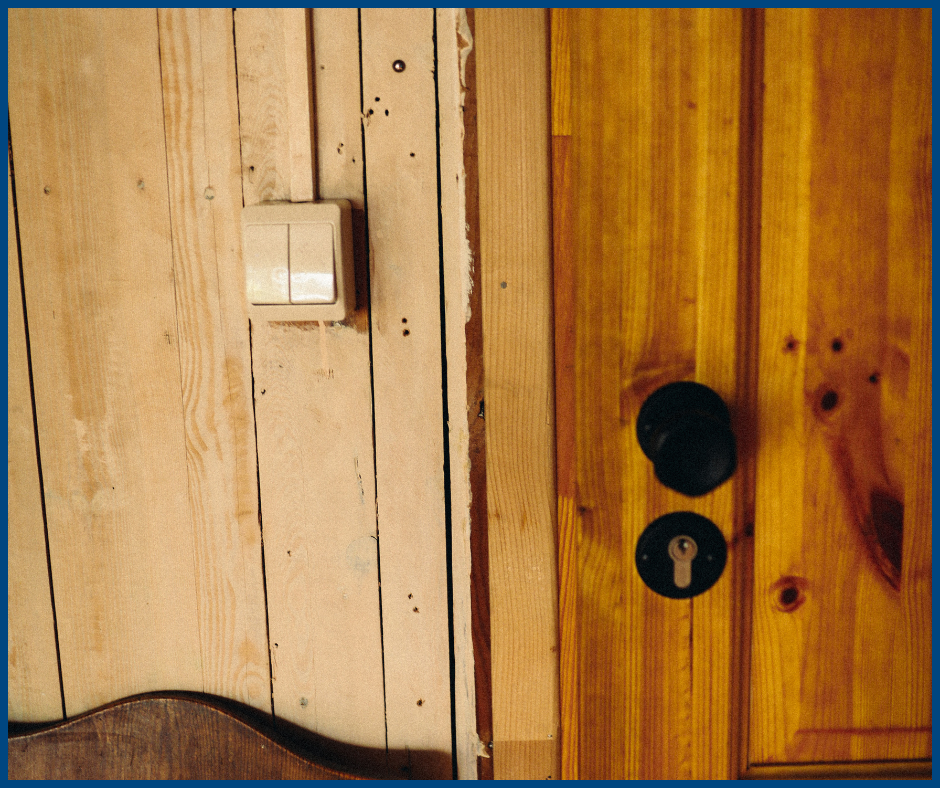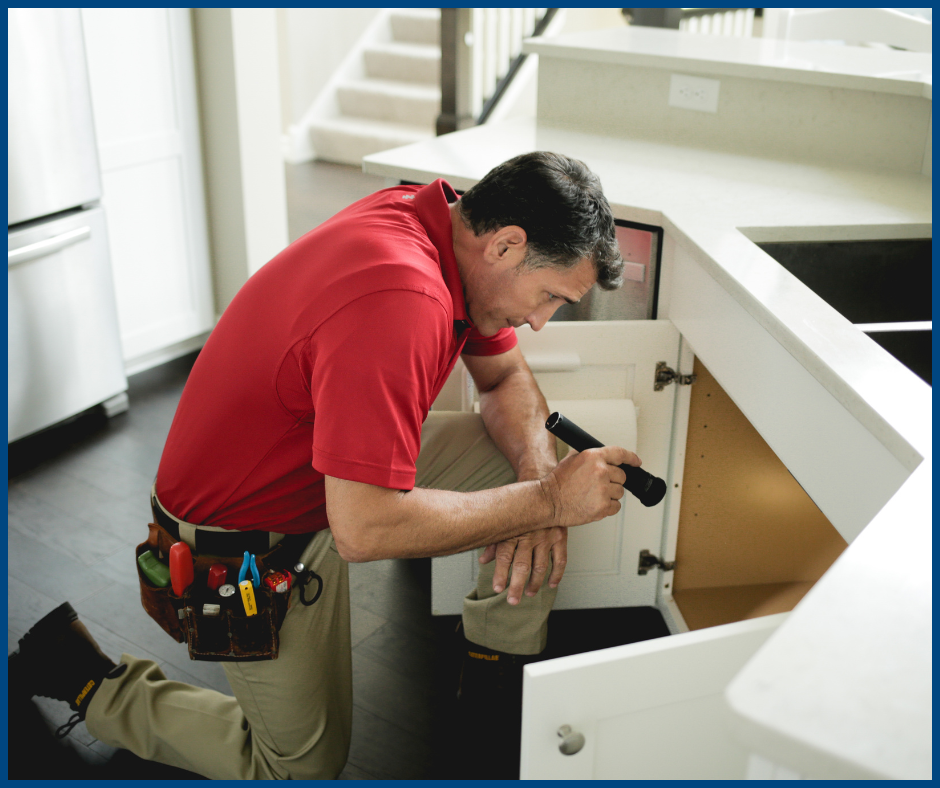How to Create a Cozy Outdoor Space for Fall Entertaining
As the air turns crisp and the leaves begin to change, it’s the perfect time to host gatherings in your backyard. Fall entertaining offers a wonderful opportunity to embrace the season and create a warm, inviting outdoor space for friends and family. Here’s how you can design a cozy atmosphere that’s perfect for fall get-togethers.
Add Warmth to Your Outdoor Space for Fall Entertaining
When planning, keeping your guests warm is essential. A fire pit or outdoor heater is a must for providing heat and a focal point. If you have a small space, opt for portable fire bowls or heaters that are easy to move around. The crackle of the fire and its glow will enhance the cozy vibe of your fall entertaining.
Keep blankets and throws readily available for guests to wrap themselves in when the temperature drops. Drape them over chairs or store them in a basket so everyone can easily grab one when needed.
Lighting Ideas for Fall Entertaining
The right lighting is crucial for setting the mood during fall entertaining. As daylight fades earlier, adding warm, soft lighting will make your outdoor space feel inviting. String lights are ideal—they can be strung along fences, over trees, or around a pergola to create a magical atmosphere.
Using lanterns with LED candles or solar-powered lights is another great way to add a soft glow. Don’t forget to include path lighting for safety and to help guests move comfortably between different areas of your space during your fall gatherings.
Comfortable Seating for Your Space
Comfortable seating is key to keeping your guests around for a cozy evening of fall. Choose outdoor sofas with plush cushions, wicker chairs with soft pillows, or even a couple of oversized bean bags to create a warm and welcoming space. Arrange the seating around a fire pit or a central table to encourage conversation and connection.
For larger spaces, you can create multiple seating areas, giving guests the option to gather in smaller groups and chat in cozy corners during your fall entertaining event.
Fall Decor for Your Outdoor Entertaining Space
To enhance the seasonal vibe, incorporate autumn-inspired decor. Add natural elements like pumpkins, gourds, and dried leaves to your tables, walkways, and seating areas. A plaid tablecloth or rustic wooden trays can provide a warm, inviting look that perfectly complements fall entertaining.
Don’t forget to include natural textures like woven baskets or wool blankets to add an extra layer of warmth. Potted fall flowers, such as mums or marigolds, can also brighten up your space with rich seasonal colors.
Food and Drinks for Fall Entertaining
No fall entertaining event is complete without seasonal food and drinks. Set up a self-serve hot drink station with warm beverages like apple cider, mulled wine, or hot chocolate. These cozy drinks are perfect for keeping your guests warm during fall evenings.
For snacks, consider a charcuterie board featuring seasonal fruits, cheeses, and nuts, or offer up comfort foods like chili or warm dips. If you have a fire pit, hosting a s’mores station with various chocolates and flavored marshmallows is always a hit at fall entertaining gatherings.
Weather-Proof Your Space for Fall Entertaining
Fall weather can be unpredictable, so it’s important to prepare your outdoor space for different conditions during your fall entertaining event. A covered pergola or a large patio umbrella can protect your guests from light rain, while outdoor curtains or windscreens help block chilly breezes.
If rain is expected, you can still host a successful fall event by moving the party under a covered porch or canopy tent. Adding extra rugs, cushions, and blankets will help keep the space cozy and inviting, no matter the weather.
Personal Touches for Memorable Fall
It’s the little details that make fall entertaining extra special. Add personal touches like custom drink tags, personalized place settings, or a fun fall-themed photo booth for guests to enjoy. A thoughtfully curated music playlist can also enhance the atmosphere and set the right mood for your event
Polybutylene Pipes: What You Need to Know
Polybutylene pipes were widely used in homes from the late 1970s through the mid-1990s, particularly in the United States and Canada. Known for their affordability and ease of installation, this type of plumbing was considered a great advancement at the time. However, over the years, these pipes have developed a notorious reputation due to their tendency to fail unexpectedly. Understanding the issues surrounding these plumbing materials is crucial for homeowners, home buyers, and real estate professionals.
In this article, we will explore the history, risks, and best practices for dealing with polybutylene piping in your home.
What Are Polybutylene Pipes?
These plumbing materials are made from a plastic resin called polybutylene. They were commonly used for residential water supply systems. Typically blue, gray, or black, they can be found in interior plumbing systems and exterior underground water mains.
This type of piping was attractive for home construction due to its low cost and flexibility. These features allowed plumbers to install it faster than traditional copper pipes. Additionally, polybutylene was thought to be highly resistant to freezing, corrosion, and scaling—making it seem like an ideal solution for residential water systems.
However, over time, it became evident that polybutylene plumbing had significant durability issues, leading to risks for homes that still use these materials.
Why Do These Pipes Fail?
One of the main concerns with this type of piping is its susceptibility to failure. Although the pipes initially appear to function well, they can deteriorate unexpectedly. The primary reason for this is oxidation caused by exposure to the chemicals used in the water supply, particularly chlorine.
As time passes, exposure to water treatment chemicals causes the material to become brittle. Microscopic cracks form inside the pipes, and these cracks can lead to leaks or sudden bursts. Unfortunately, there is no reliable way to predict when a polybutylene pipe will fail, and even well-maintained systems can experience leaks.
Factors that contribute to the failure of polybutylene pipes include:
- Water Chemistry: High chlorine levels in municipal water accelerate the deterioration of these plumbing materials.
- Age of Pipes: Most polybutylene systems are now several decades old, increasing the risk of failure.
- Poor Installation: Incorrect fittings and connections can worsen the likelihood of pipe failure.
- Pressure Changes: Fluctuations in water pressure can stress the already fragile pipes, leading to cracks and leaks.
Common Signs of Plumbing Problems
Identifying polybutylene systems in your home is the first step toward assessing risk. However, it’s also essential to recognize early signs of failure before a catastrophic event occurs.
Signs of potential plumbing issues include:
- Discolored Water: If you notice rust-colored or cloudy water from your taps, this could be an early sign of deterioration.
- Water Stains on Walls or Ceilings: Leaks can cause water to accumulate behind walls or ceilings, showing up as brown stains.
- Reduced Water Pressure: Deteriorating pipes can restrict flow, leading to a noticeable drop in pressure.
- Unexplained Water Bills: A sudden spike in your bill without noticeable leaks could indicate an underground plumbing leak.
If you experience any of these issues, have a professional plumber inspect your system to determine if polybutylene plumbing is the root cause.
Replacing Polybutylene Pipes: Is It Necessary?
The question of whether to replace these pipes is common. Unfortunately, there is a strong consensus among professionals that replacement is necessary. Temporary fixes, such as patching leaks, may offer short-term relief but do not address the underlying issue of pipe deterioration.
Given the unpredictability of plumbing failures, replacement is the most reliable solution. Most plumbing professionals recommend switching to modern materials such as PEX (cross-linked polyethylene) or copper for their durability and reliability.
Benefits of Replacing Old Plumbing:
- Increased Home Value: Updated systems are more attractive to potential buyers.
- Peace of Mind: Replacing your pipes ensures you won’t face unexpected leaks.
- Improved Water Quality: New materials are less likely to leach chemicals into your water.
- Reduced Insurance Premiums: Some insurers charge higher rates for homes with outdated plumbing.
While the cost of replacing these pipes varies, it’s a worthwhile investment that can prevent future damage and repair costs.
Legal and Insurance Implications
These plumbing materials have been the subject of several class-action lawsuits, particularly in the 1990s when widespread failures were reported. These lawsuits led to settlements that covered replacement costs for affected homeowners. However, these funds are no longer available, meaning current homeowners are responsible for replacing the plumbing out of pocket.
Additionally, some home insurance companies may refuse to cover homes with polybutylene piping or charge higher premiums due to increased risk. If you are buying or selling a home, it’s essential to disclose the presence of these systems, as failure to do so could lead to legal liability.
Polybutylene Pipes and Home Inspections
If you are buying a home, it’s important to have a professional inspection to determine whether polybutylene plumbing is present. An inspector can identify these systems and recommend necessary steps to address the issue.
For sellers, consider replacing outdated plumbing before listing your property. Doing so increases your home’s marketability and helps avoid the potential for buyers negotiating lower offers due to outdated materials.
Conclusion
Polybutylene pipes, once hailed as a cost-effective solution, have proven to be a significant risk for homeowners due to their tendency to deteriorate and fail. For anyone living in a home with this plumbing, replacement is the most reliable way to prevent future leaks and water damage. Additionally, replacing these pipes can increase your home’s value, improve water quality, and reduce insurance premiums. Homebuyers should be vigilant in inspecting homes for polybutylene plumbing, and sellers should be proactive in addressing this issue to avoid potential legal and financial consequences.
From Overgrown Plants to Beautiful Blooms: A Homeowner’s Journey
Overgrown plants around the house can create a host of problems, both aesthetically and practically. As homeowners, it is crucial to recognize the potential dangers and drawbacks associated with unchecked plant growth. In this article, we delve into the intricacies of managing overgrown plants, ensuring your home remains a safe and beautiful space.
The Importance of Managing Overgrown Plants
Overgrown plants can pose significant risks to the structure and safety of your home. Neglecting to address plant overgrowth can lead to various issues, including:
- Foundation Damage: Roots can infiltrate and damage foundations, leading to costly repairs.
- Pest Infestation: Dense foliage provides ideal nesting grounds for pests and insects, which may invade your home.
- Blocked Pathways: Overgrown vegetation can obstruct walkways and driveways, creating hazards for residents and visitors.
- Diminished Curb Appeal: A well-maintained landscape enhances the aesthetic appeal of your home, while overgrown plants can detract from its value.
Identifying Overgrown Plants
Before taking action, it’s essential to identify which plants in your landscape are overgrown. Look for the following signs:
- Excessive Height: Plants should be proportional to their surroundings. If they are taller than intended, it may be time for a trim.
- Dense Foliage: A healthy plant should not be overly bushy. If the leaves are crowded and unable to receive sunlight, the plant may suffer from stunted growth.
- Interference with Structures: Plants that are encroaching upon windows, roofs, or siding need immediate attention to prevent potential damage.
Effective Techniques for Managing Overgrown Plants
1. Pruning and Trimming
Pruning is a critical technique for managing overgrown plants. By cutting back excessive growth, you can help your plants thrive while also maintaining your home’s exterior.
- When to Prune: Timing is crucial. Generally, pruning should occur in late winter or early spring before new growth begins. However, specific plants may have unique requirements.
- Tools Needed: Ensure you have the right tools, including pruning shears, loppers, and a saw for larger branches.
- Pruning Techniques: Use sharp tools to make clean cuts, reducing stress on the plant. Focus on removing dead or diseased branches and thinning out dense areas to improve air circulation.
2. Regular Maintenance
Maintaining your plants on a regular basis can prevent overgrowth before it starts.
- Scheduled Inspections: Conduct inspections every few months to monitor growth patterns and assess overall health.
- Mulching: Apply mulch around the base of plants to suppress weed growth and retain moisture, making it easier to manage your landscape.
- Fertilization: Proper fertilization ensures that plants grow healthily. Avoid over-fertilizing, as this can lead to rapid, uncontrollable growth.
3. Plant Selection and Placement
Choosing the right plants for your landscape is essential to preventing overgrowth in the first place.
- Native Species: Opt for native plants that are well-suited to your local climate and soil. These plants typically require less maintenance and are less prone to overgrowth.
- Spacing: Properly space plants when planting to allow for adequate growth without overcrowding. Follow the recommended spacing guidelines for each species.
4. Removal of Overgrown Plants
In some cases, it may be necessary to remove plants that have become excessively overgrown.
- Assessing Health: Before removing a plant, evaluate its health. If it’s diseased or infested, removal may be the best option to protect surrounding plants.
- Removal Techniques: For small plants, hand-pulling may suffice. For larger plants, use appropriate tools to cut them back to ground level, ensuring that roots are also removed to prevent regrowth.
- Disposal: Dispose of plant material responsibly. Check local guidelines for yard waste disposal or consider composting healthy plant materials.
Preventing Future Overgrowth
1. Education and Awareness
Understanding the growth habits of your plants is crucial in preventing future overgrowth. Research each species to learn about their growth patterns, ideal conditions, and care requirements.
2. Landscaping Design
Investing in professional landscaping services can help you create a sustainable design that minimizes the likelihood of overgrowth.
- Design Considerations: A well-thought-out landscape design considers plant size, spacing, and environmental conditions.
- Seasonal Planting: Incorporating a variety of plants that bloom in different seasons can enhance your landscape while making maintenance easier.
3. Continuous Monitoring
Keeping an eye on your plants as they grow is vital. Regularly assess your landscape for signs of overgrowth and act promptly.
- Document Growth: Take photos or keep a journal of your garden’s progress. This can help you identify changes over time and understand when maintenance is necessary.
Conclusion
Overgrown plants around your home can lead to various problems, including aesthetic issues, safety hazards, and structural damage. By recognizing the signs of overgrowth, employing effective management techniques, and maintaining a proactive approach, you can ensure a beautiful and safe landscape. Remember to educate yourself about your plants, maintain regular care, and seek professional help if needed.
Healthy House or a Hidden Nightmare? The Importance of Home Inspections
As Halloween approaches, the idea of a haunted house captures our imagination with tales of ghostly encounters and eerie noises. But what if your home feels more haunted than healthy? Instead of living in fear of the unknown, consider the transformative power of a professional home inspection to uncover hidden issues that could be affecting your living environment.
Identifying the Signs of a Haunted House
A truly haunted house is often marked by unsettling features. Here are some signs that your home might be experiencing underlying issues that need addressing:
1. Creaky Floors and Doors
While creaking floors can add to the spooky ambiance during Halloween, they may also signal structural concerns. If your home has developed mysterious sounds, it’s time to investigate further.
2. Unexplained Drafts
Drafty windows and doors can create an uncomfortable atmosphere. If you feel sudden gusts of wind in your home, it could indicate gaps that not only let in cold air but may also lead to increased energy bills.
3. Flickering Lights
Flickering lights might create an eerie setting, but they can also indicate serious electrical issues. Whether it’s faulty wiring or an overloaded circuit, addressing these problems promptly is crucial for safety.
4. Visible Cracks and Damage
Cracks in walls or ceilings can appear innocuous, yet they may reveal significant structural issues. Keeping an eye on these changes can prevent more severe problems from developing over time.
The Essential Role of Home Inspections
To avoid living in a haunted house, investing in a professional home inspection is key. At AmeriSpec Inspection Services, our certified and licensed inspectors specialize in uncovering hidden problems, ensuring your home remains a safe and healthy space.
What Does a Home Inspection Cover?
A comprehensive home inspection examines various aspects of your property, including:
- Structural Integrity: Inspecting foundations, roofs, and walls for any signs of damage or instability.
- Electrical Systems: Evaluating wiring, outlets, and circuit panels to ensure they comply with safety standards.
- Plumbing Systems: Checking for leaks, pipe condition, and overall functionality of fixtures and appliances.
- HVAC Systems: Assessing heating, ventilation, and air conditioning systems to ensure optimal performance.
- Environmental Concerns: Identifying issues such as mold, water damage, or pest infestations that can impact your health.
Benefits of a Home Inspection
Understanding the benefits of a professional home inspection can help homeowners make informed decisions and maintain a healthy living environment:
1. Peace of Mind
A professional inspection provides reassurance that your home is structurally sound and free from hidden issues. This peace of mind allows you to enjoy your living space without worry.
2. Informed Decision-Making
If you plan to sell your home, a pre-listing inspection can reveal necessary repairs that might impact the sale price. Addressing these concerns before listing your property can lead to a smoother transaction and potentially higher offers from buyers.
3. Increased Property Value
A well-maintained home is more attractive to potential buyers. By investing in a home inspection, you not only protect your investment but also increase its marketability.
4. Cost Savings
Identifying problems early can save you significant costs in the long run. By addressing minor issues before they escalate, you can avoid expensive repairs and maintain the overall health of your home.
Healthy Home Tips: How to Maintain Your Space
In addition to getting a home inspection, consider implementing the following tips to keep your home in optimal condition:
1. Regular Maintenance Checks
Conduct routine checks on critical systems in your home, including HVAC, plumbing, and electrical systems. Look for signs of wear and ensure everything is functioning correctly.
2. Improve Insulation
Proper insulation can help prevent drafts and improve energy efficiency. Consider upgrading insulation in attics and crawl spaces to maintain a comfortable temperature throughout your home.
3. Keep Gutters Clean
Regularly clean and maintain gutters to ensure proper drainage. Clogged gutters can lead to water damage and foundation issues.
4. Monitor Humidity Levels
Maintaining proper humidity levels (between 30% and 50%) can prevent mold growth and improve indoor air quality. Use dehumidifiers in damp areas, such as basements.
5. Schedule Seasonal Inspections
Consider scheduling seasonal inspections to identify potential issues before they become major problems. This proactive approach can save you time and money in the long run.
Schedule Your Home Inspection Today
This Halloween season, don’t let your home feel haunted by underlying problems. Take proactive steps to ensure your house remains a healthy and safe environment by scheduling a home inspection with AmeriSpec Inspection Services. Our experienced inspectors are here to help you identify and resolve any concerns, providing you with peace of mind and confidence in your living space.
Investing in a professional home inspection will help you turn your haunted house into a healthy haven, ensuring your living environment is both safe and comfortable. Don’t wait until it’s too late—reach out to us today to schedule your inspection!
